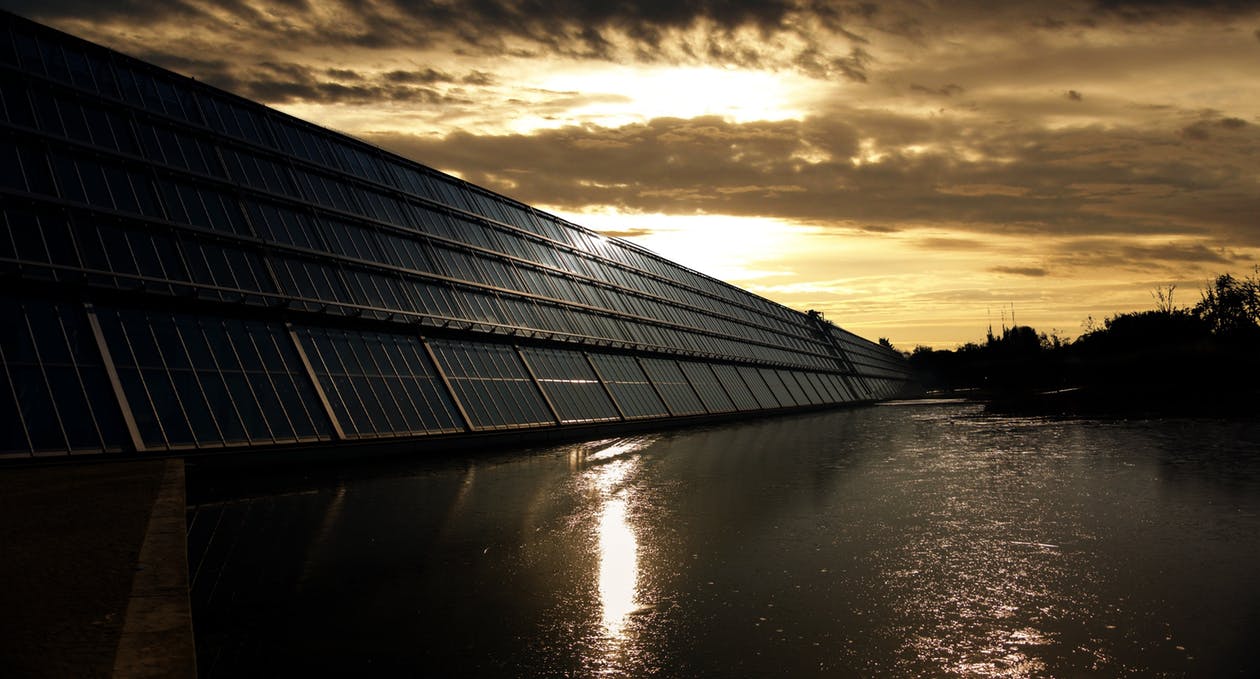Boris Johnson is hoping to claim global leadership on the climate issue by committing Britain to an accelerated programme of emissions cuts. Is this achievable – and affordable?
What has the government announced?
Last month, in the run-up to Joe Biden’s Earth Day climate summit, Boris Johnson announced a new legally binding pledge committing the UK to cut emissions of greenhouse gases by 78% by 2035, compared with 1990 levels. The UK already has a legally mandated target of reaching net-zero emissions of greenhouse gases (principally carbon dioxide) by 2050. This was introduced by Theresa May’s government just before she left office in 2019. The country also already has a commitment to cut emissions by 68% by 2030, compared with 1990 levels (we’ve already done 49%). The new pledge gives the UK five more years to hit a higher target, so it might appear to be a natural milestone on progress to net zero. But in reality it’s a significant acceleration and major change.
How so?
Because it means that the government is “front-loading” the bigger slice (58%) of its remaining emissions cuts in the years before 2035, rather than putting off the toughest work until the 2035-2050 period. Some climate scientists argue that the whole idea of a “net zero” target by 2050 is a mirage that rests on unproven (and not-yet-invented) carbon removal and battery storage technologies – and that the concept is counterproductive if it encourages the world to carry on emitting in the belief that technology will save us eventually. The UK’s tough target, necessitating even earlier action, means that this argument loses some of its force, assuming that the target-setting is actually backed up by actions. And crucially, for the first time the UK’s pledge includes emissions from international aviation and shipping – areas which have previously not been included, in part because their cross-border nature makes it hard to allot them to nation states.
How does that compare internationally?
According to Johnson, who is keen to grab the opportunity for global leadership presented by the UK’s hosting of the COP26 climate summit later this year, it is “the most ambitious target to cut emissions in the world”. Currently, the EU is committed to a 55% cut by 2030. In the US, Joe Biden has just doubled the Obama-era target, committing the US to a 52% cut by 2030 (up from 25%). And many other countries are making similar pledges. Japan’s target is 46%, Canada’s is 40%. China is committed to net zero by 2060, and peak emissions by 2030, and President Xi Jinping recently committed the country (by far the world’s largest emitter) to slashing its use of coal in the second half of this decade. Even Brazil’s president, Jair Bolsonaro, who once vowed to follow Donald Trump in pulling his country out of the Paris climate accord, has now brought forward its net-zero goal by ten years to 2050. If all these pledges were met, there’s a chance of achieving the global 45% fall in emissions by 2030 that scientists say is needed to avoid the 1.5˚C of warming that the Paris accord is aimed at preventing.
Is the UK target achievable?
Britain risks getting too far ahead of the global consensus in terms of what’s achievable by when. In recent decades, says John Rentoul in The Independent, the UK has already made great progress thanks to its “dash for gas” and the expansion of offshore wind power. But that very success has led to “wishful thinking about economies of scale” and underestimates of costs. In particular, decarbonising home heating – along with heavy industry, transport and food production – is going to be more difficult and more expensive than shifting the UK energy production system away from coal and into renewables. And the remarkable political consensus on the subject will surely fracture as the bills come in. “Everyone agrees with green policies until they start to cost more than 5p for an occasional plastic bag.”
How much will it cost?
Estimates in the UK range from the Treasury’s 2019 estimate of about £1trn (over several decades) to claims by sceptical campaigners of a figure around three times that. The Climate Change Committee (CCC), the independent body that advises the government, now forecasts the overall cost will be around 0.5% of GDP by 2050 – a fall from its original estimate of 1%-2%. Consumers may face higher costs for electric cars, taxes to fund the necessary infrastructure, and potentially higher prices in carbon-intensive sectors such as cement and steel. But the big “missing bit”, says the CCC’s ex-chair Adair Turner, is buildings and domestic heating. “Once you electrify residential heat, people will pay less in some cases. But there are non-trivial capital costs” for millions of households.
“Non-trivial” sounds ominous?
Nearly a third of the UK’s greenhouse gas emissions is produced by central heating, and gas boilers heat about 85% of UK homes. Under the government’s plans, new homes can’t be fitted with gas boilers from 2025, and existing boilers must not be replaced from the mid-2030s. Costs to households in terms of spending on new heating pumps, plus insulation and other energy improvements, could easily run to tens of thousands of pounds, says Ross Clark in The Spectator. That’s especially true if the new target means the government adopts the CCC’s proposal to ban the sale of homes by 2028 unless they achieve a “C” rating in an Energy Performance Certificate. At present, just ten million of Britain’s 29 million homes qualify.
Read more: MoneyWeek




